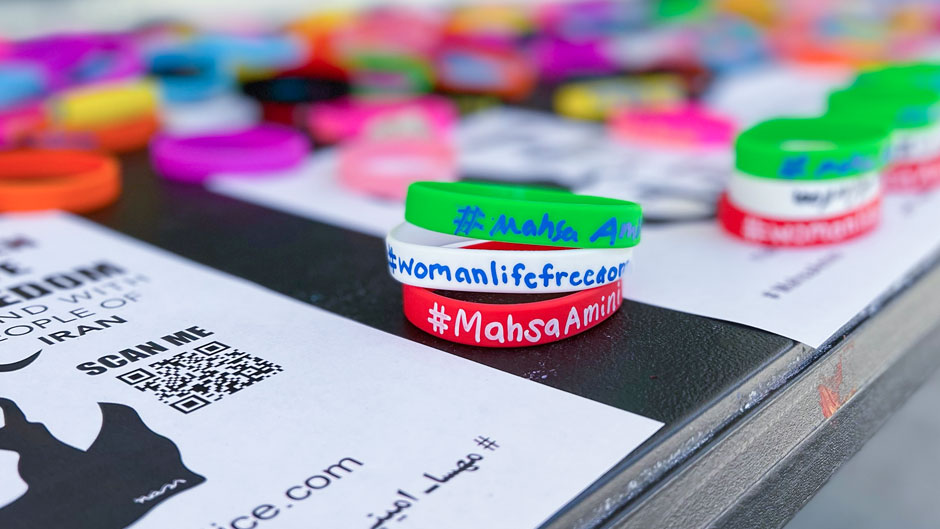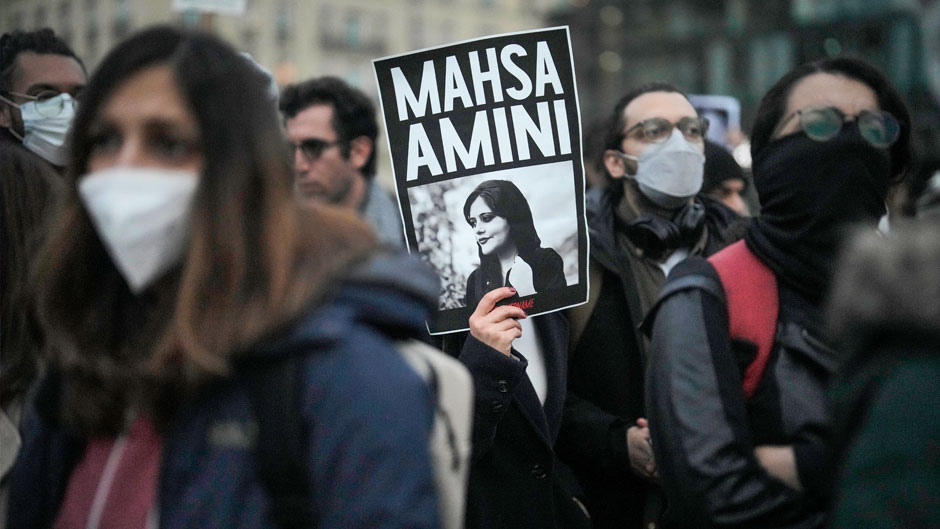The death of 22-year-old Mahsa Amini, detained Sept. 13 by Iranian “Guidance Patrols” because her hijab failed to appropriately cover her head, neck, and hair as required by Islamic law, ignited a wave of uprisings and violence that has increasingly engulfed the Middle East country in recent weeks.
Claire Oueslati-Porter, senior anthropology lecturer in the University of Miami College of Arts and Sciences and director of the gender and sexuality studies program, and several Iranian students with the Graduate Students Association (GSA) insist that a conflation of factors—political and economic grievances that have been building for decades—has opened a new phase of resistance against the hardline Islamic government that is attracting support from a wider girth of Iranian society than ever before.
“We’re seeing multiple movements that are flowing together at this particular moment in time,” said Oueslati-Porter. “These protests mark the next phase of a youth and feminist movement, a legacy of protests that have been going on for several decades.”
Oueslati-Porter, who teaches a course on gender in the Middle East and North Africa and recently authored a book on Tunisian women, highlighted that while segments of the populace participating in the movement may have different motivations, they all aim for greater freedom and rights.
“Their motivations have to do with ideas and notions about freedom and orientation toward much of the world and society that is much more influenced by cosmopolitan ideas rather than the version or Islam that is presented by their leadership,” she said. “Which isn’t to say that they’re not interested in being Muslim. It’s that the version of Islam that’s being presented and enforced by Iranian leadership is viewed as oppressive.”
Last week, members of the GSA tabled an event near the Shalala Student Center to raise awareness about the protests in Iran.
Padideh Lovan, born and raised in Tehran and now conducting post-doctoral research at the Miller School of Medicine, initiated the event. She and other students in the group emphasized that the protests are part of a longstanding movement for more freedom and rights.

“This has been building for the last 40 to 50 years,” said Lovan, who first came to the United States in 2015 to study on a student visa. “This is not just one problem that people are protesting—it’s very multifaceted. People are unhappy about a lot of things economically and politically in terms of their freedom, their religious views, and how they want to practice.”
Lovan was herself accosted and taken away by the morality police—or Guidance Patrol who make sure that women are properly wearing the hijab—when she was 18 and living in Tehran. “Every single woman in Iran has been affected directly or indirectly by the morality police,” she said.
On its website, the U.S. State Department describes Iran as an “anti-Western religious theocracy,” a dangerous regime that is the largest exporter of state terrorism in the world. Sayyid Ali Hosseini Khamenei, the country’s supreme leader, is the longest serving head of state in the Middle East. In office since 1989, he served in the Iran-Iraq war and developed close ties with the Revolutionary Guard, a powerful base of support for the regime.
Women face a range of restrictions in many areas of their life—marriage, divorce, employment, and culture. Islamic law affords no legal protection against domestic violence or sexual harassment and the constitution has no nondiscrimination clause for gender. Women are prohibited from leaving the country without their husband’s consent.
To better understand the roots of the uprising in Iran, Oueslati-Porter highlighted the insights of anthropologists such as Shahram Khosravi, a professor at Stockholm University and author of “Young and Defiant in Tehran,” who emphasizes the importance of class.
“People with more class privilege have more of a desire for the kinds of freedoms associated with middle class—going to the malls, to cafes, and other cosmopolitan pleasures associated with the West,” she said. “What’s happening now in Iran is impacted by that. Along with serious concerns among protesters about the mistreatment of women in public life, education, and public institutions, it seems there is a conflation of more than one strain of thought and movement.”
She noted that the current spate of protests was indeed sparked by the death of Amini, yet also pointed to recent government policies that have further fueled the fires of discontent.
“There’s a reactionary sense that new figures in government want to take the country back to the good ole days, the stricter version—instead of the liberalizing trends—of Islamic law for women’s clothing and their comportment in public,” Oueslati-Porter said.
‘That certainly irks many people, but it’s also important to note that women and girls get picked up by the morality police and brutalized—sometimes killed—regularly,” she added. “So, the fact that this one young woman becomes a symbol also seems to highlight that the moment had to be really right for this inflection of the ongoing protest.”
Lovan and other GSA students are concerned for the regime’s response to the protests, that instead of relaxing policies and addressing economic hardship, it will again unleash security forces to brutally repress the protests as it did in 2019.
Still, she believes the resistance movement is stronger and broader than ever before.
“This movement is unique. It’s led by women, but men have joined,” she said. “There’s no leader, and people are getting together and rising from everywhere. They shut down one group at a university, and another one rises. Shut down one school and protests arise at others.”
At the tabling event on the Coral Gables Campus, Lovan and other students were motivated to meet other Iranian students, but also to raise awareness about what’s happening in their country of origin.
“It’s so important that more people understand that this is about basic human rights and it’s not just one country’s fight—this is the world’s fight,” said Lovan.

